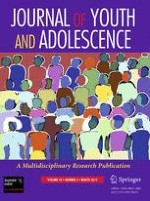01-03-2013 | Empirical Research
Family Relationships and Adolescent Well-Being: Are Families Equally Protective for Same-Sex Attracted Youth?
Gepubliceerd in: Journal of Youth and Adolescence | Uitgave 3/2013
Log in om toegang te krijgenAbstract
Existing research suggests that sexual minority youth experience lower levels of well-being, in part because they perceive less social support than heterosexual youth. Sexual minority youth with strong family relationships may demonstrate resilience and increased well-being; however, it is also possible that the experience of sexual stigma may make these relationships less protective for sexual minority youth. Using two waves of data from the National Longitudinal Study of Adolescent Health, we explore the links between same-sex attraction, family relationships, and adolescent well-being in a sample of over 13,000 7th–12th grade adolescents (51 % female, 52 % non-Latino/a white, 17 % Latino, 21 % African American, and 7 % Asian). Specifically, we examine whether lower levels of parental closeness, parental involvement, and family support among same-sex attracted youth explain in part why these youth experience increased depressive symptoms and risk behaviors, including binge drinking, illegal drug use, and running away from home, relative to other-sex attracted youth. Second, we ask whether family relationships are equally protective against depressive symptoms and risk behaviors for same-sex attracted and other-sex attracted youth. We find that same-sex attracted youth, particularly girls, report higher levels of depressive symptoms, binge drinking, and drug use in part because they perceive less closeness with parents and less support from their families. Results also suggest that parental closeness and parental involvement may be less protective against risk behaviors for same-sex attracted boys than for their other-sex attracted peers. Findings thus suggest that interventions targeting the families of sexual minority youth should educate parents about the potentially negative effects of heteronormative assumptions and attitudes on positive adolescent development.
